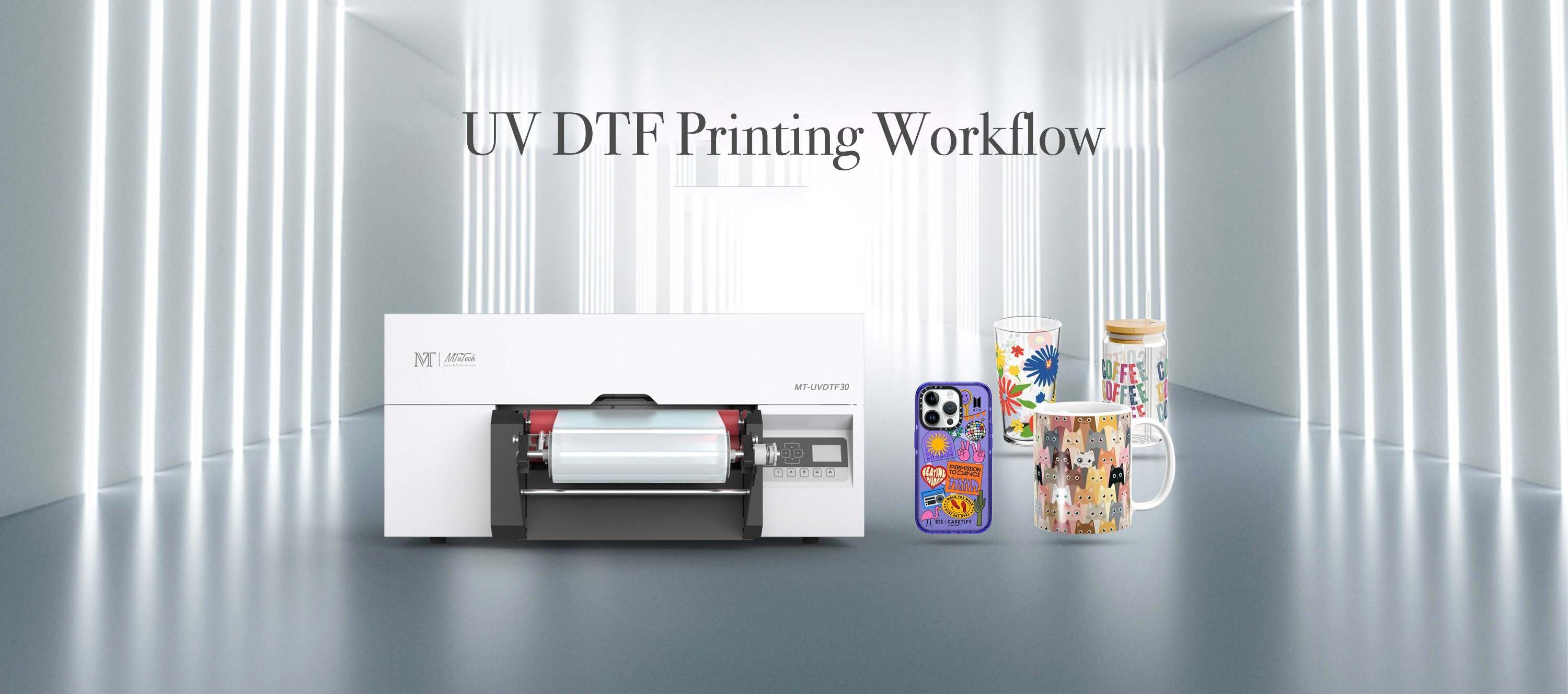Introduction
Digital printing has transformed the way we create custom products, and UV DTF (Direct to Film) printing is no exception. Known for its vibrant colors and durability, this technology is becoming increasingly popular among small businesses and DIY enthusiasts. However, many individuals wonder if they can dive into UV DTF printing without owning an expensive printer. In this blog post, we will explore the DIY aspects of UV DTF printing, answer the burning question of whether it's feasible without a printer, and discuss alternative methods to achieve satisfying results.
Understanding UV DTF Printing
What is UV DTF Printing?
UV DTF printing combines the advantages of traditional Direct to Film printing and UV printing. This method uses UV light to cure the ink onto transfer films, creating vibrant and long-lasting designs. The process typically involves printing designs on special films and then applying them to various substrates using heat and pressure.
The Benefits of UV DTF Printing
Vibrant Colors: UV DTF printing offers a broader color range compared to standard methods, ensuring your designs pop.
Durability: The UV curing process results in prints that are resistant to scratching, fading, and weathering.
Versatility: It can be used on various surfaces, including textiles, wood, glass, and metal.
No Mess: Unlike traditional screen printing, UV DTF eliminates the need for large messy setups and chemical usage.
DIY UV DTF Printing Without a Printer
At this point, you might be wondering: Can I perform UV DTF printing without a dedicated printer? The short answer is that while traditional UV DTF printing requires a specialized printer for best results, certain DIY methods can approximate similar effects. Let’s discuss some of the techniques you could use.
1. Using Other Printing Methods
If you don’t have access to a UV DTF printer, consider other printing technologies that can be adapted. Here's how:
Inkjet Printing: If you own an inkjet printer, you can create designs on transfer films. However, these prints will not be UV-cured, so you'll need to take steps to protect them from scratches and fading, perhaps by applying a clear coat.
Laser Printing: Some DIY enthusiasts have used laser printed designs on specific film types. This requires a careful process to ensure the film can withstand heat and pressure during application.
2. Transfer Techniques
You may also consider using transfer techniques to achieve a similar look. Here are a few to explore:
Heat Transfer Vinyl (HTV): This technique involves cutting designs from vinyl and applying them to your chosen substrate using heat and pressure.
Sublimation Printing: If your substrates are polyester or have a polyester coating, sublimation can produce colorful and durable designs, albeit with different characteristics compared to UV DTF.
Water Slide Decals: These decals can achieve intricate designs without the need for a specialized printer, although they may not have the same durability as UV prints.
3. Post-Processing Approaches
One tricky aspect of DIY UV DTF printing is ensuring durability. Here are some post-processing techniques you can employ without a printer:
Clear Coats: Applying a UV-resistant clear coat can add a protective layer to enhance the longevity of your prints.
Acrylic Sealer: Use this in conjunction with your printed designs to protect them from moisture and scratching.
Considering the Costs
Embarking on a DIY UV DTF printing project without a printer might seem like a cost-effective option, but it’s essential to evaluate the complete cost. Here are some factors to consider:
Supply Costs: Expenses for films, transfer materials, and other tools can add up quickly.
Time Investment: Weigh the time spent on creating your designs and applying them manually against the efficiency of using a printer.
Quality vs. Cost: Understand that while the DIY route can save money, the quality may not match that produced by a professional printer.
The Learning Curve
Diving into DIY UV DTF printing requires a willingness to learn and troubleshoot. Many beginners face challenges in getting the desired results, so patience and practice are paramount. You can find various resources online, including forums, YouTube tutorials, and blogs, that guide you through the nuances of this process.
Conclusion
While the traditional method of UV DTF printing requires a specialized printer for optimal results, several DIY alternatives exist that can emulate this printing style. By utilizing different printing technologies, transfer techniques, and adequate post-processing methods, you can achieve impressive designs without needing a dedicated UV DTF printer. However, do remember that quality may vary, and investing in a professional printer may ultimately save time and provide superior outcomes.
For those serious about venturing into UV DTF printing, investing in a dedicated printer might be worth considering. Explore our high-quality UV-DTF printers here to find options that meet your needs and elevate your printing projects.
FAQ
Can I create UV DTF prints with a regular inkjet printer?
While you can use an inkjet printer for printing on transfer films, the prints may not be UV-cured and will lack the durability of professional UV DTF prints. Additional protection like clear coats is recommended.
What materials can I use with UV DTF printing?
UV DTF printing works on various materials, including textiles, wood, glass, and metal. However, make sure your chosen material is compatible with whichever printing method you decide to use.
Is DIY UV DTF printing cost-effective?
While DIY methods can be more affordable initially, consider the costs of supplies and the potential need for multiple attempts to achieve desired results. For frequent use, investing in a professional printer may be more efficient in the long run.
How durable are the designs created through DIY methods?
The durability of designs created through DIY methods will likely vary. Using protective coatings can help increase longevity, but they may still not match the durability of commercial UV DTF prints.
Where can I learn more about UV DTF printing techniques?
There are numerous online resources, including forums, video tutorials, and blogs dedicated to DIY printing techniques. Websites focused on printing technology often provide valuable insights and tips.

